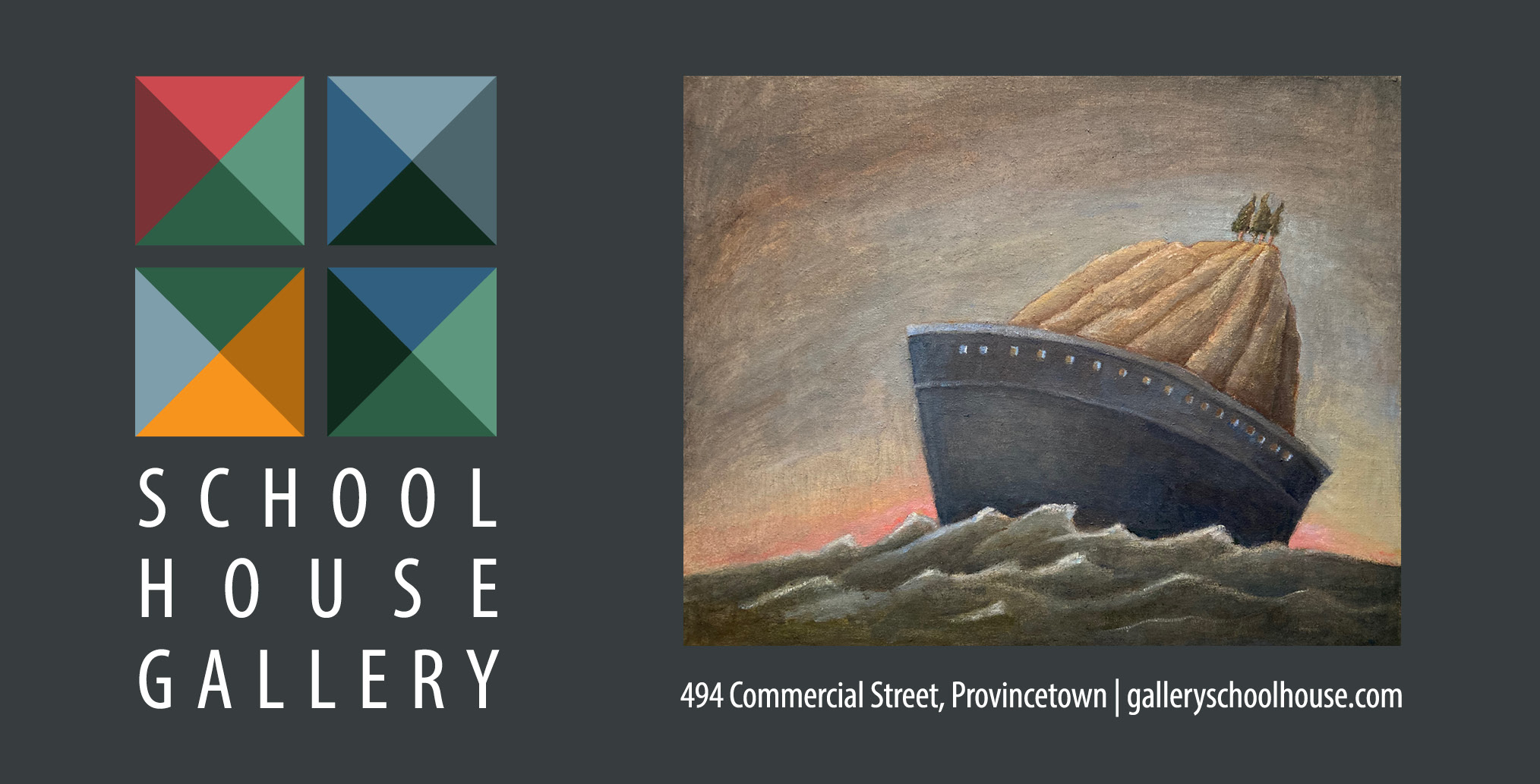“Crossroads,” the name of André van der Wende’s current exhibition at Wellfleet Preservation Hall, alludes to a creative journey that offers resolution but also a continuous sense of possibility.

The exhibition revolves around paintings that embody a creative breakthrough van der Wende experienced in 2023. “I could see many directions to go,” he says. With this exhibition, he feels that “everything has kind of come to fruition.”
He points to two black-and-white paintings as examples of an experience in balancing gesture and geometry. Another large-scale painting at the entrance of the hall, Swirlies, articulates a similar balance between loose abandon and hard-edged structure.

In this painting, as in the black-and-white ones, he began with an underpainting, using a squeegee to move paint across a panel in fast, full-body motions. “I’ve always been a process painter,” says van der Wende, who has made abstract, unsentimental paintings over a 40-year career. For the second layer, he put masking tape across the surface in a haphazard, free-form manner. He then added another layer of oil paint and used a brush dipped in mineral spirits to lift areas of paint and leave traces of the brush flowing across the surface. When the tape was lifted, it left behind sharp forms.
The result is a handsome, layered image. It’s dense and busy with shapes and streaks of paint moving in all directions, but it’s crystalized by a balance of contacts: between the blue, chromatic underpainting and the black-and-white overpainting and between the clean shapes of the tape and the reckless, improvisational application of paint.

Whereas this painting represents a resolution between extremes — or an arrival at a crossroads where multiple directions are held in suspension — other paintings in the exhibition feel like traveling down a road where anything could happen.
Van der Wende is skilled at maintaining a sense of liveliness. In Floaters, a small painting done in sunset colors, he lays on the paint with a thick brush, apparently loaded with unmixed colors. The movement of the brush across the surface smears and mixes the colors together. There are some green vertical marks in the foreground — perhaps part of a landscape? Black blobs, which appear to be splattered from above, mar the surface like a rude accident. The painting feels like it was freshly plucked from the studio floor, still in progress.
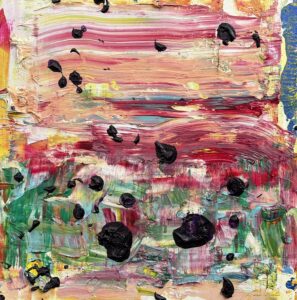
Even in the more contained paintings, he uses silver, which functions like a fugitive color. Its effect changes with the light and the position of the viewer. In van der Wende’s paintings, the viewer is never fully on solid ground.
Van der Wende likes to destabilize himself. “When I’m too self-conscious, things freeze up,” he says. He enjoys taping surfaces where areas are obscured and result in something unexpected — he calls the process “working blind.” His tools, like the squeegee, and his painting moves, like dripping and scraping, also function a bit independently, subtly resisting or complicating his intentions.
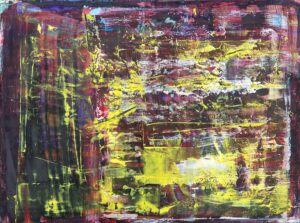
Van der Wende studied photography and painting at Canterbury University in his native New Zealand. The silver in some of his recent paintings references silver gelatin used in photography. To a less illustrative effect, the surprises and interstitial states in van der Wende’s paintings reflect the process of developing photos in a darkroom — which van der Wende describes as “a kind of magic.”
Baywatch doesn’t have the black-and-white look of traditional photography. Rather, here van der Wende works with a cheerful yellow and aqua blue (often his paintings navigate a stormy relationship between two colors). In this painting, the splotches of mineral spirits eroding pigment and the layers of color, streaked and washy, evoke a chemical reaction on celluloid film.
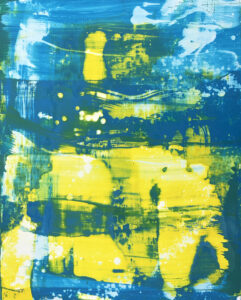
After graduating from art school in New Zealand, van der Wende moved to the U.S., “chasing a girl,” he says. They had met in New Zealand, but she was a student at the Rhode Island School of Design and was originally from the Cape. Although the romantic relationship fizzled out, van der Wende stayed on the Cape and has now been in this country for over 35 years.
The landscape of the Cape found its way into his painting along with his interest in photography, abstraction, and minimalism. Yet his paintings are not depictions of landscapes. He points to another pair of black-and-white paintings in the upstairs gallery at Wellfleet Preservation Hall. Unlike the pair integrating geometry and gesture, these two are smaller and more atmospheric — all soft edges and blurred forms. He says they are kettle ponds.
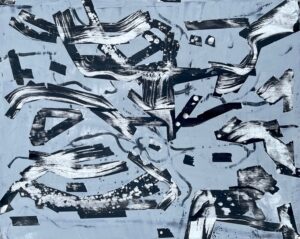
“I don’t want to record the landscape in front of me, but I want to give a sense of what it feels like to be in the landscape,” says van der Wende. “What is the temperature? What does it smell like?” The kettle pond paintings certainly don’t look like recognizable images of ponds, but they do capture something of the foggy, quiet atmosphere one might experience there in winter. In other paintings, van der Wende evokes the movement of water or breaking ice that he observed at Nickerson State Park. Baywatch is not a summer scene, but it encapsulates the heat, water, and frenzy typical of summer on the Cape.
Like the mercurial energy of nature, van der Wende’s work might reach states of relative stasis, but there’s a sense it could move in any direction. The road is always open, and van der Wende is always up for adventure.
“The work needs to surprise me in some way,” he says.
‘Crossroads’
The event: Paintings by André van der Wende
The time: Through June 30
The place: Wellfleet Preservation Hall, 355 Main St.
The cost: Free
